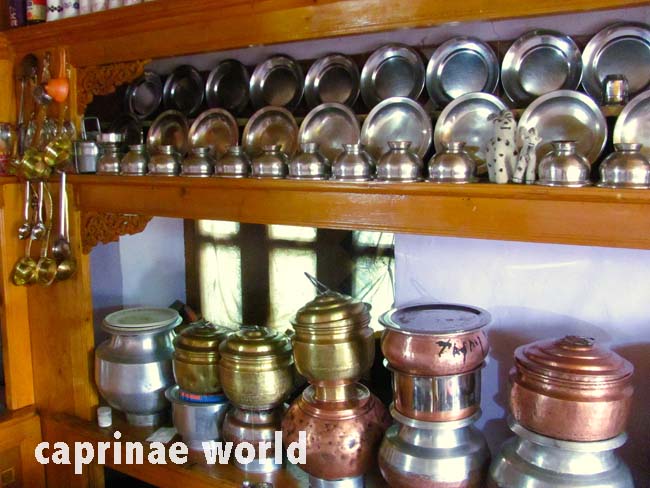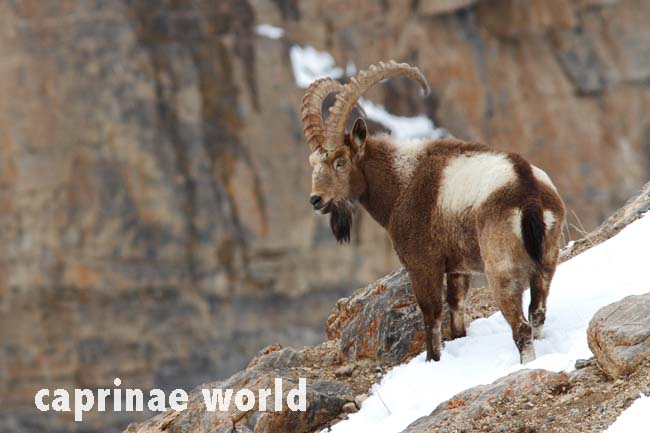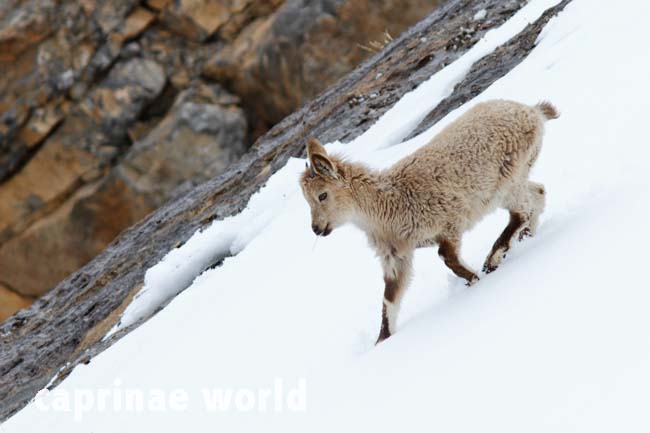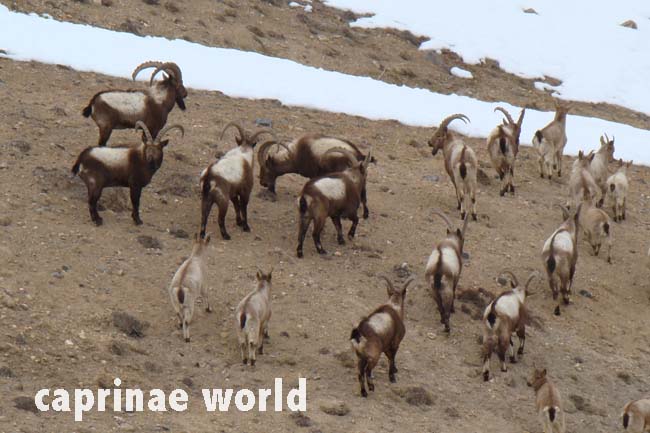Find below a series of photos of magnificent Himalayan Asian Ibex.
Himalayan ibex (C. s. sakeen): Pamir, Hindukush, Karakorum [1], Himalaya, Transhimalaya, Kunlun Shan and the Tibetan Plateau between Kunlun Shan and the Karakoram. (Some researchers attribute ibexes from Kunlun Shan to another supspecies: C. s. dementievi.)
The Himalaya ibex resembles the Central Asian ibex in body and horn formation, but is somewhat smaller overall. Pelage color is again highly variable. Middleaged males are usually rather light in color with pale brown or creamy white back and sides. Other parts are yellowish-brown. Prime males of seven years and older may be rich chocolate-brown with circular patches of yellowish-white hair on the neck, mid-dorsal and rump regions. [5]

Himalayan Ibex – female and young in habitat. Photo: Ralf Bürglin, near Tharuche, Ladakh, 2015-10-26, range: 415 m

Ibex toys in kitchen shelf as souvenirs for visitors: Photo: Ralf Bürglin, Saspotse, Ladakh, 2015-10-26
Literature Cited
[1] Reading, R. & Shank, C., 2008. Capra sibirica. The IUCN Red List of Threatened Species 2008: e.T42398A10695735. http://dx.doi.org/10.2305/IUCN.UK.2008.RLTS.T42398A10695735.en. Downloaded on 25 April 2016.
[5] Damm, Gerhard R. and Franco, Nicolás, 2014: The CIC Caprinae Atlas of the World – CIC International Council for Game and Wildlife Conservation, Budakeszi, Hungary in cooperation with Rowland Ward Publications RSA (Pty) Ltd., Johannesburg, South Africa.









